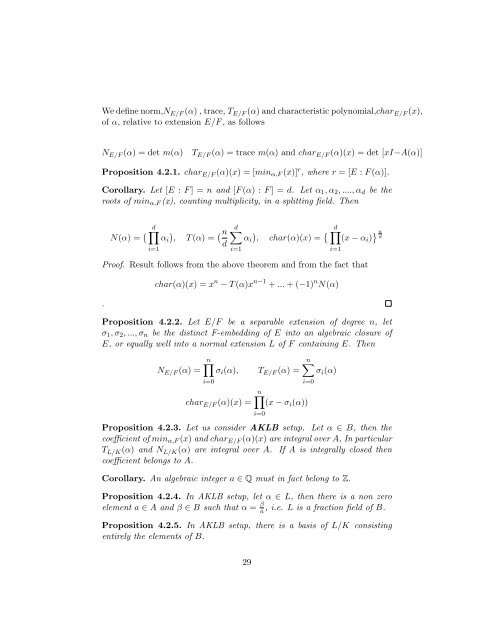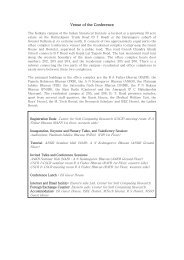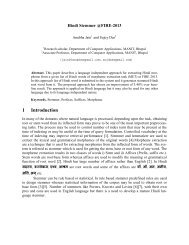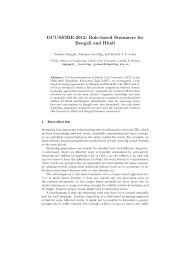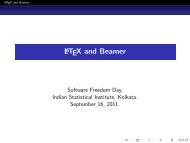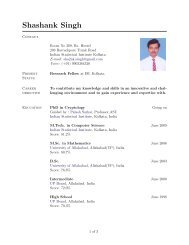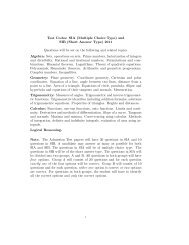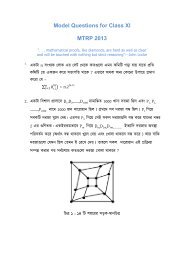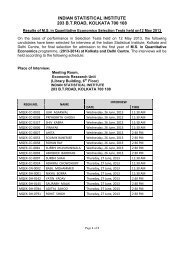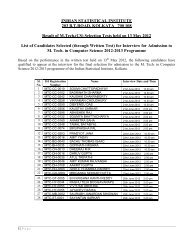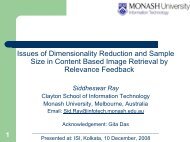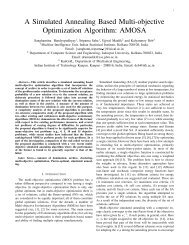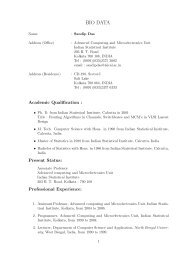Abstract Algebra and Algebraic Number Theory
Abstract Algebra and Algebraic Number Theory
Abstract Algebra and Algebraic Number Theory
You also want an ePaper? Increase the reach of your titles
YUMPU automatically turns print PDFs into web optimized ePapers that Google loves.
We define norm,N E/F (α) , trace, T E/F (α) <strong>and</strong> characteristic polynomial,char E/F (x),<br />
of α, relative to extension E/F , as follows<br />
N E/F (α) = det m(α)<br />
T E/F (α) = trace m(α) <strong>and</strong> char E/F (α)(x) = det [xI−A(α)]<br />
Proposition 4.2.1. char E/F (α)(x) = [min α,F (x)] r , where r = [E : F (α)].<br />
Corollary. Let [E : F ] = n <strong>and</strong> [F (α) : F ] = d. Let α 1 , α 2 , ...., α d be the<br />
roots of min α,F (x), counting multiplicity, in a splitting field. Then<br />
N(α) = ( d ∏<br />
i=1<br />
α i<br />
)<br />
, T (α) =<br />
(n<br />
d<br />
d∑ )<br />
α i ,<br />
i=1<br />
{ ∏<br />
d<br />
char(α)(x) = (x − α i ) } n d<br />
i=1<br />
Proof. Result follows from the above theorem <strong>and</strong> from the fact that<br />
.<br />
char(α)(x) = x n − T (α)x n−1 + ... + (−1) n N(α)<br />
Proposition 4.2.2. Let E/F be a separable extension of degree n, let<br />
σ 1 , σ 2 , ..., σ n be the distinct F-embedding of E into an algebraic closure of<br />
E, or equally well into a normal extension L of F containing E. Then<br />
N E/F (α) =<br />
n∏<br />
σ i (α), T E/F (α) =<br />
i=0<br />
char E/F (α)(x) =<br />
n∑<br />
σ i (α)<br />
i=0<br />
n∏<br />
(x − σ i (α))<br />
Proposition 4.2.3. Let us consider AKLB setup. Let α ∈ B, then the<br />
coefficient of min α,F (x) <strong>and</strong> char E/F (α)(x) are integral over A, In particular<br />
T L/K (α) <strong>and</strong> N L/K (α) are integral over A. If A is integrally closed then<br />
coefficient belongs to A.<br />
Corollary. An algebraic integer a ∈ Q must in fact belong to Z.<br />
Proposition 4.2.4. In AKLB setup, let α ∈ L, then there is a non zero<br />
element a ∈ A <strong>and</strong> β ∈ B such that α = β a<br />
, i.e. L is a fraction field of B.<br />
Proposition 4.2.5. In AKLB setup, there is a basis of L/K consisting<br />
entirely the elements of B.<br />
i=0<br />
29


